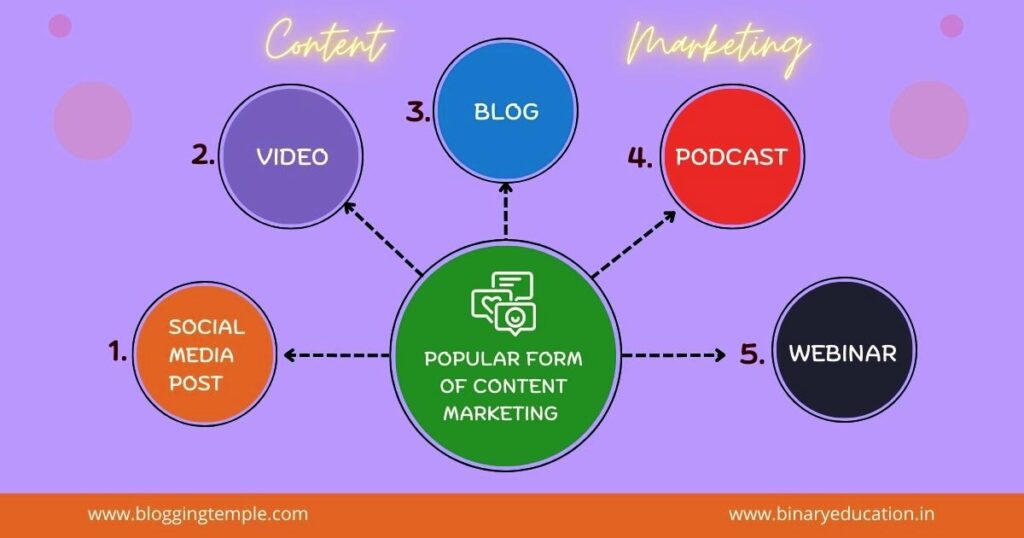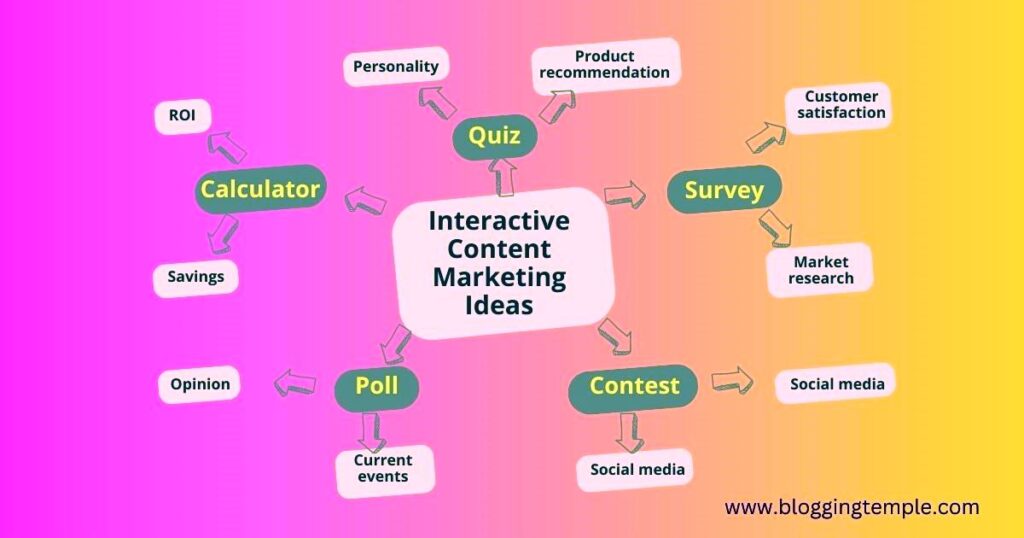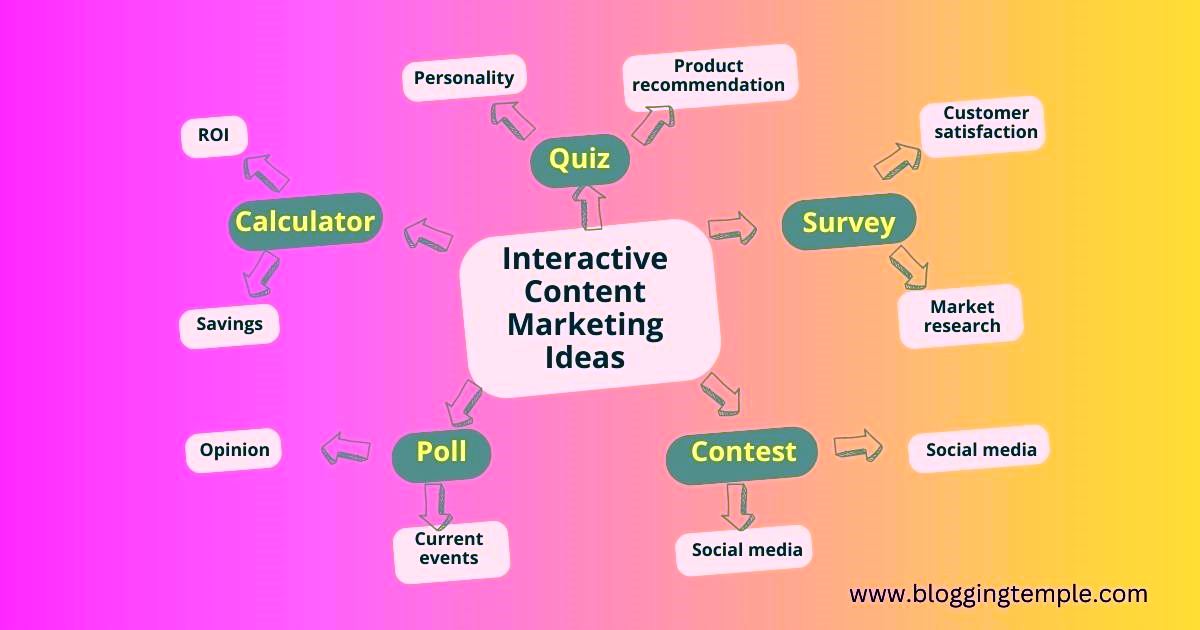In this Article, I will make you understand how you can make money through a strategy of Content Marketing which has become an art of Digital Marketing & an effective way of Making Money Online. This Article will provide full guide in very easy steps that will help you making this as your main career goal. To know about content marketing more, follow as below…..
Table of Contents
Learn to Improve your knowledge: https://www.binaryeducation.in/
Meaning of Content Marketing

Learn About Digital Marketing-https://bloggingtemple.com/what-is-digital-marketing-learn-earn/(opens in a new tab)
Content marketing is a strategic marketing approach that involves creating and distributing valuable, relevant, and consistent content to attract and engage a specific target audience. The content is designed to provide value, address audience needs and pain points, and ultimately drive profitable customer action.
Unlike traditional advertising, content marketing focuses on building trust, credibility, and relationships with the audience by providing useful information, entertaining stories, educational resources, or insightful perspectives. It aims to establish a brand as a trusted authority in its industry and create a positive association with its products or services.
The core principles of content marketing include understanding the target audience, creating valuable content that resonates with their interests, distributing the content through various channels, and measuring the effectiveness of the content in achieving marketing goals. It can encompass various formats such as blog articles, videos, infographics, podcasts, social media posts, whitepapers, or ebooks.
Content marketing aims to attract and engage the audience, nurture relationships, drive brand awareness, generate leads, and ultimately influence customer behavior. By consistently delivering valuable content, businesses can establish themselves as industry leaders, foster customer loyalty, and drive conversions.
Types of Content Marketing
There are several types of content marketing that you can incorporate into your strategy. Here are some common types:
Blog Posts/Articles:
Written articles or blog posts are one of the most popular forms of content marketing. They allow you to provide in-depth information, share insights, and address specific topics relevant to your audience.
Videos:
Video content is highly engaging and can be shared on various platforms such as YouTube, social media, or your website. It can include product demonstrations, tutorials, interviews, behind-the-scenes footage, or storytelling videos.
Infographics:
Infographics are visual representations of data or information. They present complex information in a visually appealing and easy-to-understand format. Infographics are highly shareable and can be used to simplify complex concepts or showcase statistics.
Social Media Content:
Content created specifically for social media platforms, such as Facebook, Instagram, Twitter, or LinkedIn. This can include short videos, images, quotes, tips, or mini blog posts tailored to the platform’s format and audience.
Ebooks/Guides:
Longer-form content pieces that provide comprehensive information on a particular topic. E-books or guides are often downloadable and can be used as lead magnets to capture email addresses or as resources to establish expertise.
Case Studies:
Case studies highlight real-life examples of how your products or services have helped customers achieve specific results. They provide social proof and demonstrate the value you offer.
Podcasts/Audio Content:
Podcasts allow you to deliver content in an audio format. You can discuss industry trends, interview experts, share insights, or provide educational content that your audience can listen to on-the-go.
Webinars:
Webinars are live or pre-recorded online seminars that allow you to present valuable information, conduct training sessions, or engage with your audience in real-time. They are often interactive and provide opportunities for Q&A.
User-Generated Content:
Encourage your audience to create and share their content related to your brand or products. This can include customer testimonials, reviews, social media posts, or contest entries. User-generated content can help foster community engagement and build trust.
Interactive Content:
Interactive content engages the audience and encourages them to actively participate. Examples include quizzes, polls, calculators, interactive maps, assessments, or surveys.
Remember, the type of content you choose should align with your target audience’s preferences and the goals of your content marketing strategy. It’s often beneficial to diversify your content formats to cater to different learning styles and preferences within your audience.

Content Marketing Strategy
- Understand Content Marketing:
- Content marketing is a strategic approach that involves creating and distributing valuable, relevant, and consistent content to attract and engage a specific audience.
- Its goal is to drive profitable customer action, such as increasing brand awareness, generating leads, nurturing customer relationships, or driving conversions.
- Define Your Objectives:
- Determine your content marketing objectives, which can vary based on your business goals. Examples include increasing website traffic, improving brand authority, boosting social media engagement, or driving sales.
- Identify Your Target Audience:
- Clearly define your target audience by considering demographics, interests, pain points, and behaviors.
- Create buyer personas to understand your audience’s motivations and preferences, allowing you to tailor your content to their needs.
- Conduct Content Research:
- Conduct thorough research to identify content topics that align with your audience’s interests and address their pain points.
- Use tools like Google Trends, Buzz-Sumo, or social media listening to discover popular and trending topics in your industry.
- Develop a Content Strategy:
- Create a content strategy that outlines your approach, goals, target audience, and content types.
- Determine the channels and platforms where you’ll publish and promote your content, such as your website, blog, social media, email newsletters, or guest posting opportunities.
- Establish a content calendar to plan and organize your content creation and publishing schedule.
- Content Creation:
- Create high-quality content that is valuable, informative, and engaging for your target audience.
- Utilize different content formats like blog articles, videos, infographics, podcasts, ebooks, or case studies to cater to diverse audience preferences.
- Incorporate storytelling techniques, visuals, and multimedia elements to make your content more compelling.
- Search Engine Optimization (SEO):
- Optimize your content for search engines to increase visibility and organic traffic.
- Perform keyword research to identify relevant keywords and strategically incorporate them in your content, including headings, meta tags, and alt tags.
- Focus on creating unique, valuable content that provides a great user experience and attracts natural backlinks.
- Content Distribution and Promotion:
- Leverage various channels to distribute and promote your content.
- Share your content on social media platforms, email newsletters, industry forums, and relevant online communities.
- Collaborate with influencers, industry experts, or partners to extend your content’s reach.
- Consider paid promotion through social media advertising or content distribution platforms to expand your audience.
- Engage and Interact:
- Encourage audience engagement and interaction with your content.
- Respond to comments, questions, and feedback promptly to foster a sense of community and build relationships.
- Encourage social sharing and user-generated content to amplify your reach.
- Measure and Analyze:
- Use analytics tools like Google Analytics, social media insights, or email marketing metrics to track the performance of your content.
- Monitor key metrics such as website traffic, engagement, conversion rates, and ROI.
- Analyze data to gain insights into audience behavior, content effectiveness, and areas for improvement.
- Iteration and Improvement:
- Continually refine your content marketing strategy based on data-driven insights and feedback.
- Experiment with different content formats, distribution channels, and messaging to optimize your results.
- Stay updated with industry trends and evolving customer preferences to adapt your strategy accordingly.
Steps to Start Content Marketing
Here are some steps you can take to start content marketing:
Define Your Objectives:
Start by setting clear goals for your content marketing efforts. Determine what you want to achieve with your content, such as increasing brand awareness, generating leads, or driving sales.
Identify Your Target Audience:
Understand your target audience’s demographics, interests, and pain points. Create buyer personas to guide your content creation and ensure it resonates with your intended audience.
Conduct Competitor Research:
Identify your competitors and evaluate their content marketing efforts. Determine what they’re doing well and where you can differentiate yourself.
Choose Your Content Formats:
Determine which content formats are best suited for your audience and objectives. Consider formats like blog posts, videos, social media posts, infographics, and e-books.
Develop Your Content Strategy:
Create a content strategy that aligns with your goals, target audience, and content formats. Develop a content calendar to plan and organize your content creation and publication schedule.
Conduct Keyword Research:
Perform keyword research to identify relevant keywords and phrases that your target audience uses in search queries. Incorporate these keywords naturally into your content to improve search engine visibility and attract organic traffic.
Create High-Quality Content:
Develop high-quality content that provides value to your target audience. Craft compelling headlines, use storytelling techniques, and provide unique insights to capture your audience’s attention.
Promote Your Content:
Develop a promotion plan to ensure your content reaches your target audience. Utilize various channels such as social media platforms, email newsletters, guest posting, influencer collaborations, or content distribution networks.
Analyze Your Results:
Track the performance of your content using analytics tools. Monitor metrics like website traffic, engagement (e.g., shares, comments), conversion rates, and leads generated. Analyze the data to identify trends, assess the effectiveness of your content, and make data-driven decisions for future content creation and optimization.
Continuously Improve:
Continuously evaluate and refine your content marketing strategy based on insights from data analysis, audience feedback, and industry trends. Experiment with different content formats, distribution channels, and messaging to optimize your strategy and achieve your goals.
FAQs for Content Marketing
- What is content marketing?
- Content marketing is a strategic approach that involves creating and distributing valuable, relevant, and consistent content to attract and engage a specific audience. It aims to drive profitable customer action, such as increasing brand awareness, generating leads, or driving conversions.
- Why is content marketing important?
- Content marketing is important because it helps businesses build brand awareness, establish thought leadership, engage with their audience, and drive customer action. It provides value to the audience, builds trust, and creates long-term relationships with customers.
- What types of content should I create?
- The types of content you should create depend on your audience, industry, and goals. Common types include blog posts, videos, infographics, social media content, ebooks, case studies, podcasts, and webinars. Choose content formats that resonate with your target audience and align with your objectives.
- How do I identify my target audience for content marketing?
- To identify your target audience, consider demographics (age, gender, location), interests, behaviors, and pain points. Create buyer personas that represent your ideal customers, and use market research, customer surveys, and analytics to gather insights about your audience.
- How can I optimize my content for search engines?
- To optimize your content for search engines, conduct keyword research to identify relevant keywords and phrases. Incorporate these keywords naturally into your content, including headings, meta tags, and alt tags. Focus on creating valuable, high-quality content that provides a great user experience and attracts natural backlinks.
- How can I promote my content?
- You can promote your content through various channels, including social media platforms, email newsletters, guest posting, influencer collaborations, content distribution platforms, and industry forums. Tailor your promotion strategy to each platform and engage with your audience to foster discussions and build relationships.
- How do I measure the success of my content marketing efforts?
- Measure the success of your content marketing through analytics tools like Google Analytics, social media insights, or email marketing metrics. Monitor metrics such as website traffic, engagement (shares, comments), conversion rates, and leads generated. Analyze the data to gain insights into audience behavior, content effectiveness, and areas for improvement.
- How often should I create and publish content?
- The frequency of content creation and publication depends on your resources, audience, and goals. Consistency is key, so establish a realistic content creation schedule that you can maintain. It’s better to have high-quality content published less frequently than low-quality content published frequently.
- How can I repurpose my existing content?
- Repurposing content involves taking existing content and adapting it into different formats or repackaging it for different channels. For example, you can turn a blog post into a video, create an infographic summarizing an ebook, or compile a series of related blog posts into a comprehensive guide. Repurposing helps reach new audiences and extends the lifespan of your content.
- How do I stay updated with content marketing trends?
- Stay updated with content marketing trends by following industry blogs, attending webinars or conferences, subscribing to newsletters, participating in online communities, and networking with fellow marketers. Engage in continuous learning to adapt your strategies and tactics to changing trends and consumer behaviors.
***You Can also Visit the Following Links***
Exploring The Benefits of Electric Vehicles
Best Electric Cars in the Market
How to Learn Digital Marketing
Learn SEO (Search Engine Optimization)
Earn Using Mobile Phones (Mobile Marketing)


0 thoughts on “How to Learn Content Marketing-A Creative Skill to Make Money Online | Described in 2000 words”